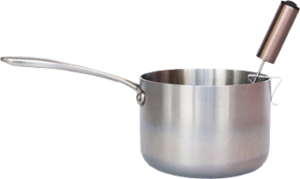This is part one of a five part series on disruptive technology. Disruptive technology is technology that pushes the boundaries of an industry, dramatically changing how we live or how things are made. It first was discussed as disruptive innovation in the innovator’s dilemma by Clayton Christensen (1997). Many, many people have written tons of examples that are old-school: hard-drives/floppy disks, monitors/flatscreens, and so on. This series is about new technologies (at least new in 2017) that are disrupting today’s technologies.
IoT stands for internet of things, and it stands to change not just one industry, but potentially many. The core idea of IoT is that something that previously wasn’t connected to the internet is now internet-connected. This simple idea can be applied to anything, from Thermostats (See NEST) to Toasters (yes, for real) all the way to pots for plants (why not get a reminder that you need to water your plant?).
Like any technology IoT must have a real use to be of any value. Real use is use that is not just “for show” but actually delivers value to the end user of the technology. IoT has four core uses that I will define here. For IoT to be useful it must save the user time, save them money, provide entertainment value, or improve their health in some way. Saving time means making something that took longer take less time. For a potted plant IoT that means instead of watering every day, you only water when the pot says it’s too dry in there. Saving money means you spend less than you otherwise would have to. The NEST thermostat knows when you are home and does not have to run your Air Conditioning quite so low when you are not there. Toys of all kinds are fun to play with, but toys that also connect to the internet can put kids into the physical world with their gadgets making them more fun. Refrigerators that know what you are eating and when can help you track calories and lose weight. Regardless of the category, IoT must be useful to be of value.
Usefulness is not enough for disruption though. To qualify as being disruptive the new technology must obviate the old technology. It doesn’t have to be cheaper (although that is one way to obviate a technology), but it does have to make the old technology essentially useless such that fewer and fewer people buy it any more. Do people still buy rotary phones? Lets be real, not unless it’s for art.
What IoT have come out to truly disrupt the market? Smart thermostats are almost there. Soon, nobody will buy dumb ones. Can you think of others? I believe that the market is wide open for inventors and startups to use a simple technology (IoT) and turn it into a true disruption. Instead of making smart toasters, think of things that would no longer be needed, IF there was a technology that obviated it. Go out and create!
The picture below is of the SmartPrompt Probe. It’s a device that tries to obviate the need for cooking thermometers. Me and the team at Key Ingredient invented and built it… neat, fun, but not disruptive. I want to try again!


